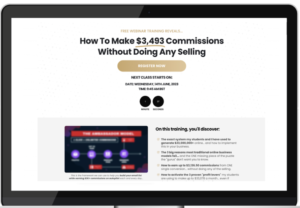Small Business Advertising and Public Relations
Introduction
Are you a small business owner struggling to boost your brand’s visibility and credibility? It’s a well-accepted fact that effective public relations (PR) can transform your business, elevating it from obscurity to prominence.
Our comprehensive guide will delve into the world of PR, providing tried-and-tested strategies tailor-made for small businesses just like yours. Ready to take your business to new heights? Let’s dive right in!
Key Takeaways
- Public relations is a valuable complement to small business marketing and advertising efforts, helping to build trust and credibility while providing cost-effective exposure to targeted audiences.
- Small businesses can leverage public relations tactics such as forming relationships with the media, pitching stories and press releases, holding events, engaging in grassroots community activities, and supporting charity causes to increase exposure and build credibility.
- Developing a strategic PR plan that defines target audience and goals, develops key messages and story angles, identifies media outlets and influencers, utilizes DIY tools, leverages social media platforms effectively, and tracks efforts is crucial for small businesses looking to incorporate public relations into their advertising strategies.
Benefits of Public Relations for Small Businesses
Public Relations offers small businesses a valuable complement to their marketing and advertising efforts, helping to build trust and credibility while providing cost-effective exposure to targeted audiences.
Complement to marketing and advertising efforts
Harnessing the power of public relations in your small business not only elevates your brand but also complements your marketing and advertising efforts immaculately. It serves as a cogent tool to enhance recognition, create a positive image, and foster communication with potential customers.
Unlike traditional advertising that directly promotes products or services, PR subtly integrates brand values into engaging stories. This unique approach can attract more attention, generate buzz around your company, reinforce ad messages, thereby prompting more customer trust and loyalty towards your business.
The symbiosis of PR along with sound marketing strategies could indeed become a game-changer for bolstering both visibility and credibility for small businesses.
Building trust and credibility
Establishing a strong public relations strategy is integral to building trust and credibility for small businesses. In an age where online reviews on Google Maps or customer testimonials on Instagram can hugely impact a business’s reputation, maintaining positive PR becomes even more crucial.
Trust plays a vital role in the decision-making process for consumers. Businesses that effectively harness PR tools like blogs, newsletters, or engaging videos often enjoy higher levels of consumer trust.
Credibility, too, comes hand-in-hand with sustained, well-targeted public relations efforts. Leveraging influencers on platforms such as Tik Tok and Pintrest to share your brand story enhances your market authenticity.
It’s not just about telling your audience what you do; it’s about showing them through thought leadership podcasts and resourceful Facebook ads. Carefully curated email lists also provide opportunities to nurture relationships with customers directly, further boosting credibility.
Cost-effective exposure
Public Relations, particularly for small businesses, serves as a cost-effective way to gain exposure. Unlike large scale advertising campaigns on platforms such as Google Ads or Facebook Ads that may require hefty budgets, public relations often entails low-to-no-cost strategies.
These can range from securing media coverage by pitching compelling stories to journalists and bloggers, utilizing the power of social networks like Instagram and Twitter to connect directly with your audience, or fostering relationships with influencers within your industry niche.
Email lists give you another affordable way to maintain contact with customers while newsletters provide regular updates about your business at little cost. Public relations does not just maximize visibility but also allows businesses to reach their target audiences without breaking the bank.
Targeted audience reach
Targeted audience reach is one of the key benefits that small businesses can enjoy through effective public relations. By strategically crafting and disseminating your messages, you have the ability to connect with your desired audience directly.
Unlike mass advertising channels, such as TV or radio, PR allows you to narrow down your focus and tailor your communication efforts to specific demographics or niche markets. This targeted approach ensures that your business reaches the people who are most likely to be interested in what you have to offer, increasing the chances of generating meaningful leads and conversions.
With a well-executed PR strategy, small businesses can effectively engage their target audience and build long-lasting relationships based on trust and relevance.
Public Relations Tactics for Small Businesses
To effectively engage in public relations, small businesses can form relationships with the media, pitch stories and press releases, hold events, engage in grassroots community activities, and support charity causes.
These tactics will help increase exposure and build credibility for your business. Read more to learn how to implement these strategies successfully.
Form relationships with the media
Building relationships with the media is a crucial aspect of public relations for small businesses. By cultivating these connections, you can increase your chances of gaining media coverage and exposure for your brand.
Start by identifying relevant journalists, reporters, and editors who cover topics related to your industry or niche. Follow them on social media platforms like Twitter and LinkedIn to stay updated on their work and interests.
Engage with their content by liking, sharing, and commenting to build familiarity.
When reaching out to the media, personalize your communication by mentioning specific articles or stories they have covered that resonate with your business. Offer yourself as a valuable resource, providing insights or expert opinions on relevant topics in your field.
Regularly share newsworthy updates about your business through press releases or story pitches tailored to each journalist’s interests.
Pitch stories and press releases
To maximize your small business’s exposure, it’s important to pitch compelling stories and press releases to the media. This proactive approach can help generate publicity and increase awareness of your brand.
Craft a captivating story angle that appeals to journalists and aligns with their audience’s interests. Then, strategically distribute your press release to targeted media outlets or journalists who cover topics relevant to your industry.
By effectively pitching stories and press releases, you have the opportunity to secure valuable media coverage that can significantly boost your business’s visibility and credibility.
Hold events and become a speaker
Small businesses can greatly benefit from holding events and becoming a speaker in their industry. This public relations tactic allows them to showcase their expertise, connect with potential customers or clients, and gain valuable exposure.
By organizing workshops, seminars, networking events, or speaking at industry conferences, small businesses can position themselves as leaders in their field and build credibility among their target audience.
Additionally, these events provide an opportunity to engage directly with attendees, answer questions, and forge meaningful relationships. By using relevant keywords such as “events”, “speaking”, “exposure”, and “industry conferences,” small businesses can enhance their online presence and attract a wider audience.
Engage in grassroots community activities
Engaging in grassroots community activities is a powerful public relations tactic for small businesses. By actively participating in local events, sponsoring community initiatives, or volunteering for charitable causes, businesses can build strong relationships with their target audience and gain positive exposure.
These activities not only demonstrate the business’s commitment to the community but also help establish trust and credibility among potential customers. Whether it’s organizing a charity run, supporting a local sports team, or hosting workshops to share expertise, grassroots involvement allows small businesses to connect on a deeper level with their community and create lasting impressions.
This organic approach to public relations helps generate word-of-mouth marketing and establishes the business as an integral part of the neighborhood or town.
Help with charity or philanthropic causes
Small businesses can greatly benefit from getting involved in charity or philanthropic causes. Not only does it allow them to give back to the community, but it also provides an opportunity for increased exposure and positive brand reputation.
When small businesses support a cause that aligns with their values and connects with their target audience, they create meaningful connections that can lead to customer loyalty and increased sales.
By engaging in grassroots community activities or partnering with local charities, small businesses can showcase their commitment to making a difference while also gaining valuable media coverage and social media mentions.
Creating a PR Plan for Small Businesses
Developing a strategic PR plan is crucial for small businesses looking to gain exposure, build credibility, and reach their target audience effectively – learn how to create your own PR plan and achieve your business goals.
Define your target audience and goals
To create an effective public relations plan for your small business, you need to first define your target audience and goals. Understanding who you’re trying to reach and what you want to achieve will help guide your PR strategies and tactics.
Take the time to research and analyze your target market demographics, interests, and media consumption habits. This information will help you tailor your messaging and identify the most appropriate media outlets and influencers to engage with.
Additionally, clearly defining your goals – whether it’s increasing brand awareness, driving website traffic, or generating leads – will ensure that your PR efforts are focused and measurable.
Develop key messages and story angles
Developing key messages and story angles is an essential aspect of any successful public relations plan for small businesses. These messages serve as the foundation for your communication efforts, helping you articulate your brand’s unique value proposition and positioning.
By identifying compelling story angles, you can effectively capture the attention of media outlets, journalists, and influencers that are relevant to your industry and target audience. Crafting these messages requires a deep understanding of your business objectives, target market, and competitive landscape.
It involves distilling complex ideas into clear and concise statements that resonate with your audience while aligning with your overall brand messaging strategy. When done right, developing strong key messages and story angles can help differentiate your small business from competitors while generating interest in what you have to offer.
Identify media outlets and influencers
Identifying the right media outlets and influencers is a critical step in any successful PR strategy. This involves finding the outlets and individuals that can reach your target audience most effectively and persuasively.
| Action | Description |
| Research media outlets | Study various media outlets to understand their audience demographics and type of content they usually publish. This includes newspapers, magazines, TV stations, radio stations, and online platforms. |
| Find relevant influencers | Identify influencers who have a following that matches your target audience. They can be bloggers, vloggers, podcasters, or social media personalities. |
| Build relationships | Establish connections with these media outlets and influencers. Send them personalized messages, comment on their posts, or meet them at industry events. |
| Pitch relevant content | Once a relationship has been built, pitch them your stories or news items. Ensure the content is tailored to their specific platform and audience for maximal impact. |
Create a media kit
To effectively promote your small business through public relations efforts, it’s essential to create a media kit. A media kit is a valuable tool that provides journalists with all the necessary information about your company, making their job easier when covering your story.
It should include relevant details such as company background, key personnel bios, product or service descriptions, high-resolution images and logos, and any recent press releases or media coverage.
By having a well-crafted media kit readily available, you increase the likelihood of getting positive exposure for your small business in news articles and other media outlets.
Implement PR strategies and tactics
Implementing effective PR strategies and tactics is crucial for small businesses looking to enhance their brand reputation and reach their target audience. To start, define your target audience and establish clear goals for your PR efforts.
Next, develop key messages and story angles that resonate with your audience and align with your business objectives. Identify relevant media outlets and influencers who can help amplify your message.
Create a comprehensive media kit that includes key information about your business, products or services, along with high-quality visuals. Once you have all these elements in place, it’s time to put your plan into action by pitching stories, holding events, engaging in grassroots community activities, or helping charitable causes.
DIY PR Tools for Small Businesses
Discover powerful DIY PR tools that can help your small business generate buzz, reach your target audience, and build credibility. From HARO to Hootsuite, these tools will take your PR efforts to the next level.
Read on to learn more!
Help A Reporter Out (HARO)
Help A Reporter Out (HARO) is a valuable DIY PR tool that small businesses can utilize to gain media exposure. HARO connects journalists and bloggers with experts in various fields, allowing small business owners to showcase their expertise and earn media mentions.
By signing up for HARO’s free service, entrepreneurs receive daily email alerts about media opportunities relevant to their industry. They can then pitch themselves as potential sources or contributors for articles, interviews, or podcasts.
This platform provides small businesses with a cost-effective way to secure valuable media coverage and increase their visibility among target audiences. With HARO’s assistance, even resource-strapped entrepreneurs can compete with larger companies in gaining positive press attention.
Muck Rack
Muck Rack is a powerful tool that can greatly benefit small businesses looking to enhance their public relations efforts. This platform allows you to easily find and connect with journalists, bloggers, and influencers who are relevant to your industry or niche.
By using Muck Rack, you can efficiently pitch your story ideas and press releases directly to the right people, increasing your chances of gaining media coverage. It also provides valuable insights on the media landscape, helping you stay updated on trending topics and identify potential opportunities for exposure.
With Muck Rack in your PR toolkit, you’ll have an effective way to build relationships with key media contacts and boost your brand’s visibility.
PRWeb
PRWeb is a powerful online platform that allows small businesses to distribute their press releases and news stories to a wide range of media outlets, journalists, bloggers, and influencers.
With PRWeb, you can easily create and optimize your press release for search engines, ensuring maximum visibility and reach. The platform provides tools for targeting specific industries or regions, tracking the performance of your press releases, and measuring the impact of your PR efforts.
By using PRWeb as part of your public relations strategy, you can effectively communicate your brand’s message to a larger audience and enhance your overall online presence.
Hootsuite
Hootsuite is a powerful social media management tool that can greatly assist small businesses in their public relations efforts. It allows users to schedule and publish content across various social media platforms, including Facebook, Twitter, Instagram, and LinkedIn.
With Hootsuite, businesses can streamline their social media presence by managing multiple accounts in one place, monitoring engagement and mentions, and tracking performance through comprehensive analytics.
This tool also enables businesses to engage with followers in real-time and respond to customer inquiries or concerns promptly. By leveraging Hootsuite’s features, small businesses can effectively manage their social media presence and strengthen their public relations efforts for increased brand visibility and engagement with their target audience.
Google Alerts
Google Alerts is a valuable tool that small businesses can use to monitor their online presence and stay updated on relevant industry news. By setting up alerts for specific keywords related to your business, you will receive email notifications whenever those keywords appear in new web content, including news articles, blogs, and social media posts.
This allows you to stay informed about what’s being said about your company and industry in real-time. Google Alerts also helps you keep an eye on your competitors by monitoring their activities and mentions online.
With this information at your fingertips, you can quickly respond to any positive or negative feedback, engage with customers or influencers talking about your brand, and identify potential opportunities for publicity or collaborations.
Leveraging Social Media for PR
Leverage the power of social media to build relationships with influencers, share news and updates, engage with followers and customers, and monitor your online reputation. Discover how to maximize the potential of social media for your small business’s public relations efforts.
Building relationships with influencers
Building relationships with influencers is a crucial aspect of leveraging social media for public relations. By connecting with influential individuals in your industry or niche, you can tap into their audience and gain credibility and exposure.
Engaging with influencers involves actively interacting with their content, providing value through comments and shares, and collaborating on joint projects or campaigns. By fostering these relationships, you can amplify your reach and enhance your brand’s reputation in the online sphere.
Sharing news and updates
Sharing news and updates is a crucial aspect of leveraging social media for public relations. Through platforms like Facebook, Instagram, Twitter, and TikTok, small businesses can easily connect with their audience by providing real-time information about new products or services, upcoming events, special promotions, or any other relevant updates.
By consistently sharing engaging content and interacting with followers in a meaningful way, businesses can build brand loyalty and foster relationships with their customers. Additionally, social media provides an opportunity to showcase the human side of the business by sharing behind-the-scenes glimpses into company culture or highlighting customer success stories.
This transparent approach helps to humanize the brand and create a sense of authenticity that resonates with audiences.
Engaging with followers and customers
Engaging with followers and customers is a crucial aspect of public relations for small businesses. It allows you to build relationships, foster loyalty, and gather valuable feedback. Through social media platforms like Facebook, Instagram, Twitter, and TikTok, you can directly communicate with your audience in real-time.
Responding promptly to comments and messages shows that you value their input and are committed to providing excellent customer service. Regularly posting engaging content such as behind-the-scenes footage, product tutorials or even hosting live Q&A sessions helps create a sense of authenticity and transparency with your followers.
By actively listening to your audience’s needs and concerns while addressing them openly and honestly creates a positive brand image that encourages trust and loyalty among your customers.
In addition to social media engagement,
regularly monitoring online reviews or mentions on platforms like Google Maps or Yelp enables you to address any issues promptly while also acknowledging positive feedback from satisfied customers.
By incorporating customer testimonials into your PR efforts through blogs,.
newsletters, videos or podcasts enhances credibility while demonstrating the effectiveness of your products or services. Lastly.
providing valuable resources such as industry insights or expert tips keeps customers informed
and engaged while establishing yourself as an authority in your field.
Monitoring online reputation
Monitoring your online reputation is crucial for small businesses. It allows you to stay proactive and protect your brand image from potential harm. By regularly monitoring what customers are saying about your business on social media, review sites, and other online platforms, you can address any negative feedback promptly and demonstrate excellent customer service.
Additionally, monitoring your online reputation enables you to leverage positive reviews and testimonials to build trust with potential customers. Stay on top of your online presence to maintain a positive image and ensure that your small business continues to thrive in the digital landscape.
Writing and Distributing Press Releases
Craft compelling and concise press releases that incorporate key elements for maximum impact; target media outlets and journalists to increase the chances of coverage; optimize releases for search engines to improve visibility online; and distribute them through reputable online platforms for wider distribution.
Elements of a compelling press release
A compelling press release consists of several key elements that grab the attention of journalists and effectively communicate your message. First, include a strong headline that hooks the reader right away.
Next, provide a concise and informative summary of the news or story you’re sharing. Make sure to answer the who, what, when, where, why, and how in this section.
In the body of the press release, use clear and engaging language to provide more details about your announcement or event. Include quotes from key individuals involved to add credibility and humanize your story.
Remember to keep paragraphs short for easy readability.
Adding relevant statistics or data can help support your claims and make your press release more newsworthy. Additionally, including multimedia elements such as images or videos can enhance the visual appeal of your release.
At the end of the press release, include contact information for media inquiries along with any additional resources or references related to your news. Proofread carefully for any errors before distributing it through online platforms or directly to targeted journalists.
Targeting media outlets and journalists
To effectively reach your target audience and generate media coverage, it’s important for small businesses to understand how to target the right media outlets and journalists. Start by identifying publications, websites, or blogs that cater to your industry or niche market.
Research their editorial focus, readership demographics, and submission guidelines. This will help you determine which outlets are the most relevant for your PR efforts.
Next, create a targeted media list that includes contact information for journalists who cover topics related to your business. Make sure to personalize your pitches and press releases based on each journalist’s interests and beat.
By tailoring your communication to their specific needs, you increase the chances of getting noticed.
Remember that building relationships with reporters is key in securing media coverage. Take the time to engage with them on social media platforms where they are active, such as Twitter or LinkedIn.
Share their articles or offer insightful comments on topics they cover. Establishing a rapport can help foster a positive relationship and make it more likely that they’ll consider covering your story in the future.
Optimizing for search engines
Optimizing for search engines is a crucial step in ensuring your press releases reach the right audience. By incorporating relevant keywords and phrases throughout your content, you increase the likelihood of appearing higher in search engine results.
This means that journalists and media outlets are more likely to discover your press release when searching for specific topics or trends. Additionally, utilizing meta tags and descriptive headlines can further enhance visibility and attract organic traffic to your website.
With effective SEO strategies, you can maximize the impact of your PR efforts and generate valuable exposure for your small business.
Distributing through online platforms
One effective way for small businesses to distribute their press releases is through online platforms. These platforms allow you to reach a wider audience, including journalists and bloggers who might be interested in covering your story.
By leveraging these platforms, you can increase your chances of getting media coverage and exposure for your business. Online distribution services such as PRWeb and Muck Rack provide easy-to-use tools that allow you to upload and distribute your press releases directly to relevant news outlets, industry websites, and social media channels.
This ensures that your news reaches the right people at the right time, maximizing your chances of generating buzz and attracting attention to your small business.
Tracking and Measuring PR Efforts
Track media coverage, website traffic, and social engagement to measure the success of your PR efforts. Collect feedback and testimonials from customers to gain valuable insights into the impact of your public relations strategies.
Monitoring media coverage and mentions
Monitoring media coverage and mentions is a crucial aspect of any public relations strategy for small businesses. By keeping track of how your brand is being portrayed in the media, you can assess the effectiveness of your PR efforts and make necessary adjustments.
This involves regularly scanning newspapers, magazines, blogs, and social media platforms to identify any articles or conversations that mention your business. Monitoring allows you to measure the reach of your publicity, understand public perception of your brand, and identify potential issues or opportunities for further engagement.
By staying on top of media coverage and mentions, you can ensure that you are maintaining a positive reputation and leveraging any positive exposure to its fullest potential.
Tracking website traffic and social engagement
Tracking website traffic and social engagement is an essential part of measuring the effectiveness of your public relations efforts. By monitoring these metrics, you can gain valuable insights into how your target audience is engaging with your brand online.
Through tools like Google Analytics and social media analytics platforms, you can track website visits, page views, bounce rates, click-through rates, and other key performance indicators. Additionally, tracking social engagement allows you to see how many likes, comments, shares, and mentions your content receives on platforms like Facebook, Instagram, Twitter, and LinkedIn.
These insights help you understand which PR strategies are driving the most traffic to your website and generating the most buzz on social media so that you can optimize future campaigns for even greater success.
Collecting feedback and testimonials
Collecting feedback and testimonials is an essential part of measuring the effectiveness of your public relations efforts. By gathering feedback from customers, clients, or industry professionals, you gain valuable insights into how your small business is perceived and can identify areas for improvement.
Testimonials serve as powerful social proof that builds trust and credibility with potential customers. Whether through surveys, online reviews, or direct communication with clients, actively seeking feedback helps you refine your PR strategies and showcase the positive impact your business has on others.
Hiring a PR Agency or Consultant
Consider your needs and budget to find the right PR agency or consultant who can collaborate with you on developing effective PR strategies.
Assessing your needs and budget
Assessing your needs and budget is a crucial step in determining whether to hire a PR agency or consultant for your small business. Take the time to evaluate your specific goals and objectives, as well as the resources available to you.
Consider what aspects of public relations you need assistance with, such as media outreach, event planning, or crisis management. Additionally, consider your budget constraints and determine how much you are willing and able to invest in PR services.
By carefully assessing your needs and budget, you can make an informed decision about whether it makes sense to hire outside help or take on PR efforts internally.
Finding the right fit
Finding the right PR agency or consultant for your small business can be a crucial step in achieving your goals and maximizing your PR efforts. Start by assessing your needs and budget to determine what level of support you require.
Then, conduct thorough research to find agencies or consultants with experience in your industry and a track record of success. Look for someone who understands your brand vision and values, and who has strong connections with relevant media outlets and influencers.
Collaboration is key, so choose someone who will work closely with you to develop effective PR strategies tailored to your business. With the right fit, you can elevate your brand’s visibility and reputation through strategic public relations initiatives that align with your objectives.
Collaborating on PR strategies
Collaborating on PR strategies is an essential aspect of any successful public relations campaign for small businesses. By working together with a PR agency or consultant, you can tap into their expertise and insights to develop effective strategies that align with your business goals.
They can help you define target audiences, identify key messages and story angles, and determine the best media outlets and influencers to reach. Through collaboration, you can leverage their knowledge while still maintaining control over your brand’s messaging and direction.
Together, you’ll create a tailored PR plan that maximizes exposure, builds credibility, and achieves your desired outcomes.
Conclusion
In conclusion, small businesses can greatly benefit from incorporating public relations into their advertising strategies. It provides a cost-effective way to build trust and credibility, reach targeted audiences, and gain exposure.
By utilizing DIY tools, leveraging social media, and tracking efforts, small businesses can effectively manage their PR campaigns and see measurable results. Whether hiring a PR agency or consultant or implementing strategies in-house, integrating public relations will undoubtedly contribute to the success of small business advertising initiatives.






2 Responses to Small Business Advertising and Public Relations